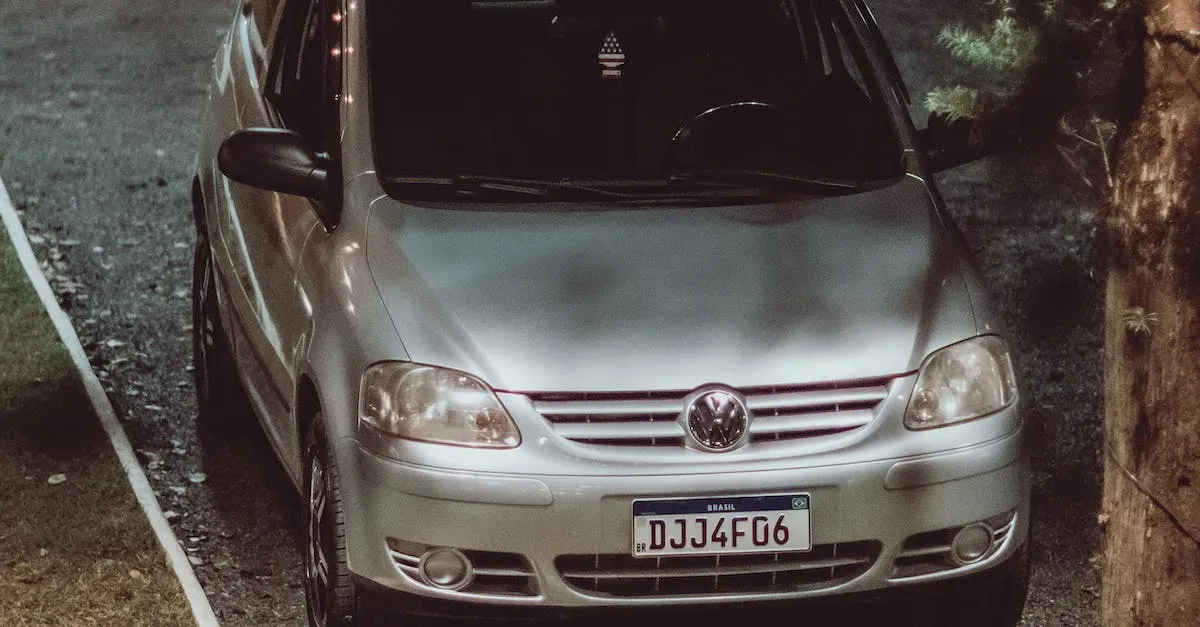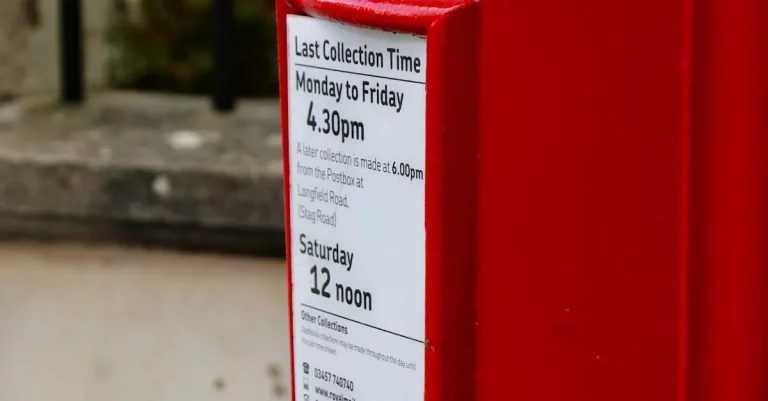Is A Front License Plate Required In California? Examining The Laws
If you’re wondering whether your vehicle needs a front license plate when driving in California, here’s a quick answer: Yes, California law requires vehicles to display valid license plates on both the front and rear of the vehicle when driving on state roads and highways.
In this comprehensive article, we’ll explain California’s exact laws on front license plates, discuss exceptions to the law, look at the rationale and debates behind requiring two plates, and provide guidance on how to stay compliant.
California’s Laws on Front License Plates
When it comes to license plates, California has specific laws in place to ensure safe and accountable driving. One of the key areas of focus is the requirement for front license plates on vehicles. Let’s take a closer look at these laws to understand their importance and implications.
View this post on Instagram
Specific statutes requiring front and rear plates
In California, the law mandates that all vehicles must display both a front and rear license plate. This requirement is outlined in Section 5200 of the California Vehicle Code. The purpose of this statute is to aid law enforcement in identifying vehicles and enforcing traffic laws effectively.
By having both plates displayed, it becomes easier for authorities to identify vehicles involved in accidents, crimes, or traffic violations.
Vehicles registered in California must display valid license plates as evidence of current registration. Passenger vehicles display two license plates: one plate on the front of the car and another plate on the back.
Applies to all vehicles except specific exemptions
While the requirement for front license plates applies to most vehicles, there are a few exceptions. Motorcycles, trailers, and certain commercial vehicles are exempt from this rule.
However, it is essential to check with the DMV or refer to the California Vehicle Code for specific exemptions based on your vehicle type.
Plates must be properly displayed and legible
It’s not just about having a front license plate; it’s also important to ensure that it is properly displayed and legible. The California Vehicle Code specifies various requirements to ensure the license plate can be easily read.
This includes mounting the plate in a horizontal position, at least 12 inches above the ground, and in a way that prevents it from swinging. Additionally, the plate must be maintained in a condition that allows it to be clearly legible, without any obstructions or damage that would hinder identification.
By adhering to these laws, drivers can avoid unnecessary fines, penalties, and potential issues with law enforcement. It is always recommended to familiarize oneself with the specific requirements outlined in the California Vehicle Code and consult the DMV for any further clarifications.
Exceptions to the Front Plate Law
While California law generally requires vehicles to have a front license plate, there are certain exceptions to this rule. Understanding these exceptions can help drivers determine if they are eligible for a front plate exemption.
Classic cars over 25 years old qualify for exemptions
Owners of classic cars that are over 25 years old may be eligible for an exemption from the front license plate requirement. This exemption recognizes the historical and aesthetic value of these vehicles and allows owners to showcase their cars without having to mount a front plate.
However, it’s important to note that this exemption only applies if the vehicle is being used for occasional transportation, exhibitions, club activities, parades, and similar events. If the classic car is being used for regular transportation purposes, a front license plate is still required.
Certain commercial vehicles have different rules
Commercial vehicles in California have different rules when it comes to front license plates. For example, trailers and semi-trailers are not required to have a front plate. However, the rear plate must be clearly visible and properly mounted.
Additionally, some commercial vehicles may be eligible for exemption from the front plate requirement if they meet specific criteria. This includes vehicles used for farming purposes, certain government-owned vehicles, and vehicles used by disabled persons who have been issued a disabled person placard or plate.
New car dealers get temporary exemptions in some cases
New car dealers in California may be eligible for temporary exemptions from the front license plate requirement. This exemption allows dealers to display their inventory without having to mount front plates on every vehicle.
However, it’s important to note that this exemption is temporary and has specific requirements. Dealers must follow the guidelines set by the California Department of Motor Vehicles (DMV) and ensure that the vehicles are properly registered and titled.
View this post on Instagram
Debates and Rationale Behind the Front Plate Law
Law enforcement uses plates for identification
One of the main reasons behind the requirement of a front license plate in California is to aid law enforcement in identifying vehicles. By having a license plate on both the front and back of a vehicle, it becomes easier for officers to quickly identify the vehicle in question.
This is particularly important in situations where law enforcement needs to quickly locate and apprehend a suspect.
Helps identify hit-and-run vehicles
In cases of hit-and-run accidents, having a front license plate can play a crucial role in identifying the responsible party. Eyewitnesses may not always get a clear view of the rear license plate, but having a front plate increases the chances of capturing the necessary information to hold the driver accountable.
This can be especially important in hit-and-run cases where the victims or witnesses are unable to provide a clear description of the vehicle involved.
Some find front plates unsightly and push back against requirement
Despite the logic behind the requirement, there are those who find front license plates unsightly and argue against the need for them. Some individuals believe that the front plate disrupts the aesthetic appeal of their vehicles, and they prefer the clean look of a vehicle without a front plate.
However, it’s important to note that the requirement of a front license plate is a matter of law and is intended to serve important purposes such as aiding law enforcement and promoting road safety.
While there may be differing opinions on the matter, it is ultimately important to adhere to the laws and regulations set forth by the state. Failure to comply with the front license plate requirement can result in fines and potential legal consequences.
Therefore, it is advisable to follow the law and display both front and rear license plates as required.
View this post on Instagram
Guidance on Staying Compliant with Front Plate Laws
When it comes to front license plates, California has clear laws in place that require all vehicles to display a front license plate. It is important for drivers to understand and comply with these regulations to avoid any unnecessary fines or penalties.
Tips on proper front plate mounting and display
Properly mounting and displaying your front license plate is crucial to staying compliant with the law. Here are some tips to ensure you are following the regulations:
- Use a sturdy and approved license plate bracket that is designed for your vehicle make and model.
- Mount the front license plate securely to the bracket using the provided screws or fasteners.
- Ensure that the license plate is fully visible and not obstructed by any objects, such as grilles or accessories.
- Regularly check the mounting hardware and make necessary adjustments or repairs if the plate becomes loose or damaged.
By following these tips, you can ensure that your front license plate is properly mounted and displayed, keeping you in compliance with the law.
What to do if your front plate bracket is damaged
If you find yourself with a damaged front license plate bracket, it is important to address the issue promptly. Driving without a properly mounted front plate can result in fines and penalties. Here are some steps you can take:
- Contact your vehicle manufacturer or a licensed dealership to inquire about obtaining a replacement bracket.
- Follow the manufacturer’s instructions for installing the new bracket or seek professional assistance if needed.
- If your vehicle does not have pre-installed mounting holes, consult with a professional installer or local automotive shop for recommendations on aftermarket solutions.
Remember, it is your responsibility as a driver to ensure that your front license plate is properly displayed at all times.
Penalties and fines for failure to display plates properly
Failure to properly display your front license plate can result in penalties and fines. In California, the fine for not displaying a front license plate is $197 plus court costs. Additionally, driving without a front license plate may also result in a fix-it ticket, which requires you to correct the issue and provide proof of compliance within a specified timeframe.
It is important to note that individual law enforcement officers may exercise discretion when enforcing front license plate laws. However, it is always best to comply with the law to avoid any potential fines or penalties.
Conclusion
California’s front and rear license plate requirements apply to most vehicles driving in the state, with some specific exemptions. Staying compliant means properly mounting and displaying plates on both ends to avoid any citations.








